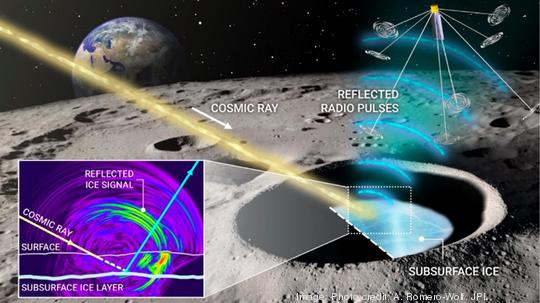
A University of Hawaii research project that detects ice deposits below the surface of the moon recently received a near-$3 million grant from the National Aeronautics and Space Administration, UH officials announced Tuesday.
The three-year, $2,945,704 award is being disbursed to five scientists in UH Manoa's Department of Physics and Astronomy and Hawaii Institute of Geophysics and Planetology, or HIGP. The funds will be used to develop technology for the NASA Cosmic Ray Lunar Sounder, or CoRaLS, mission, which was initiated by UH Manoa and NASA’s Jet Propulsion Lab.
Researchers associated with the project hope that CoRaLS will be the first mission to detect subsurface ice below the first meter of the moon's surface, with the goal of furthering lunar science and identifying resources for future manned and unmanned missions to the Moon.
The UH team will work with colleagues from the NASA Jet Propulsion Lab, the University of Chicago and Ohio State University on the project, which is slated to begin later this year, according to officials. Specifically, the funds will be focused on developing and testing new antennas and radio receiver systems that are optimized for the expected signals that CoRaLS will encounter.
“CoRaLS is the best and only way to probe for ice deeply and widely enough to conclusively discover or deny the existence of buried coherent ice deposits on the Moon,” said Emily Costello, a postdoctoral researcher/affiliate faculty in HIGP, in a statement.



